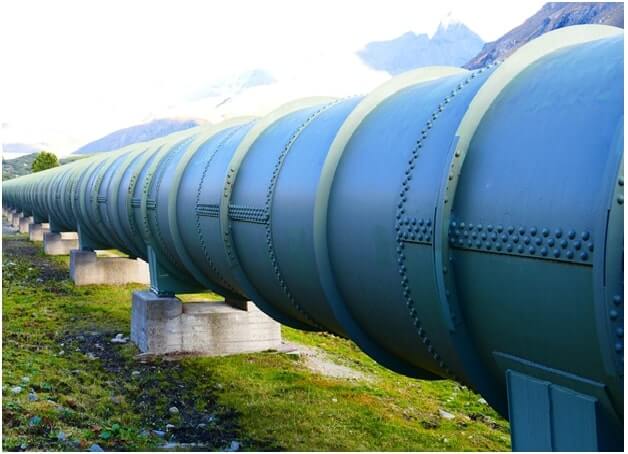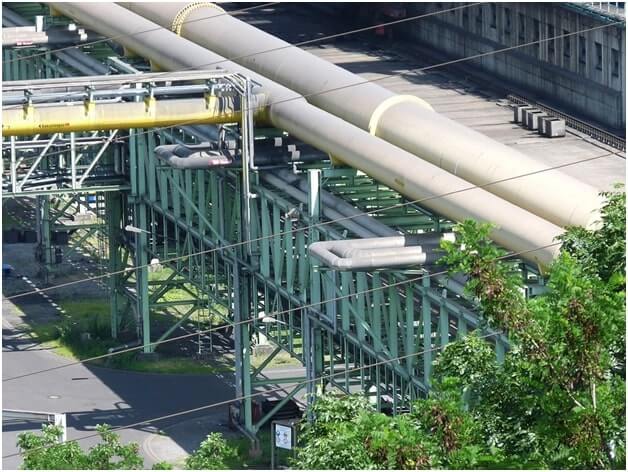There are several interventions or maintenance for pipelines. Some of these interventions include a thorough inspection of the whole system and the implementation of compression and pumping equipment. If you need to have a thorough investigation or a long-term solution for leak problems, then here are some of the services that you can consider.
Common Pipeline Interventions
1. Gas Pipe Drying
Some of the structures that convey gas or liquid should be dried from time to time. Drying is needed because hydrates can form in the pipes, which is especially the case with natural gas. The utilization of the gas pipe drying method is usually done in the absence of humidity.
Before drying, here are some steps that are involved. The operators drain the pipeline to eliminate any liquid or water inside the lines. When all the water has been removed, the operation is followed up by wiping. This involves several scrapers to run in the same direction inside the pipes.
The job is done correctly when the water weight on the walls now measures about a hundred grams per square meter. This is an indication that the entire pipeline was successfully wiped.
Drying involves several methods, and one of them can be air-dry. This consists of running several pigs at a set interval until the required point of dew is achieved. The tools used are generally non-coated foam scrapers that intend to spread residual liquids over the walls. This will facilitate evaporation and helps in faster drying.
Other methods include methanol drying, which is a process of running between pigs. A methanol plug separated by nitrogen or gas prevents the mixture from becoming flammable. The compositions of each of the ingredients that include gas, nitrogen, and methanol are well-defined according to the specific guidelines such as the pipes’ diameters and lengths.
Drying using vacuum vaporization is another way. The remaining water on the walls of the pipes is vaporized using a vacuum. The ebullition pressure corresponds to the current temperature of the tubes. The first quick phase of this method involves vacuum application and water elimination. The end of the operation consists of the creation of the vacuum, which makes the water evaporate inside the conduit.
2. Regulatory Hydraulic Tests
This is a treatment where the hydraulic test needs to meet specific regulations set by the local and national agencies. The rules are applied to make the workers and the environment safer. You can know more about the science of hydraulics when you click here.
The test has two goals. The first one is to make sure that the entire pipeline structure is well-supported, and it has the strength required to maintain operations. The second one is to ensure the perfect tightness of the procedure.
a. Hydraulic Testing
Some of the steps involved in hydraulic testing include pressurizing and filling of water. A period of stabilization is established to achieve balance inside the ducts and the soil surrounding them. This method can last for several days. There are also inspections involved if there’s an absence or too much air, which can indicate a leak.
The strength tests filled the pipes with water, and this is pressurized to its maximum working pressure. The overall test is observed for two hours. No differences and variations in pressure are permitted unless outside factors such as temperature affect the records. For the overhead parts, a visual inspection can be enough to determine the overall stability of the pipeline structure.
b. Leak Tightness
This is the test that makes sure there are no leaks anywhere in the lines. This can last from a few hours to a single day. There’s a check on how the pipes conserve water. The variations in pressure recorded should be justified by temperature, just like that of the strength test.
Sensors monitor the verification of tightness. Some of the factors involved in the overall calculation are mechanical, pressure and geometrical characteristics. If you suspect that there are leaks, you can visit rjstacey.com – pipeline repair services to make sure that everything is fine. They can do additional checks and other methods that can make you avoid downtime.
3. Use of Different Kinds of Pigs
Gel Pigs are cylindrical tools that are made in situ. They are gel-like, and they are inserted into pipelines to use for draining purposes. Some of their uses involved badly damaged pipes and distorted systems that have a lot of restrictions.
Foam pigs consist of polyurethane material with a coating that is formed in a cylindrical shape. The low-density pistons are used to wipe and drain pipes. The high and medium-density ones are used to fill water and drain shorter lines.
The high-density pistons are usually coated in the bottom and made up of a crisscross body. They are used in the same way as the low and medium density ones, but they are ideal for longer pipes. They are used dusting gas pipes as well.
Cleaning pigs are used for scraping oil primarily in the crude oil transportation industry. They scrape conventional pipes that are prone to deposits. They remove encrusted debris and remove the obstruction from many pipelines. They are also used to remove internal coats.
4. Cryogenic Plugging
This is a process that involves freezing the liquid that a pipe contains. This can be achieved through the use of cryogenic fluids. The most common fluid used in this industry is liquid nitrogen.
To implement this, a box that can fit into the tube’s diameter acts as a cooling envelope. The box can be made from polystyrene and stainless steel, which are ideal for pipes with small diameters. The installed box is placed after the pipeline is stripped of its insulation and other covers.
The specialists fill the freezing box with liquid nitrogen until the top of the tube is covered. The level should be maintained carefully until the end of the maintenance or intervention. The ice plugs result in an annular growth that develops from the walls to the axis. When a plug is well-formed, the nitrogen supply decreases, and it’s just enough to maintain sufficient levels for operations.

